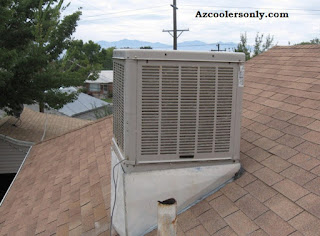Comprehensive Guide to Swamp Cooler Repair, Installation, Service, Replacement, and Maintenance
Swamp coolers, also known as evaporative coolers, are a popular and energy-efficient way to cool indoor spaces, especially in arid and dry climates. These systems work by using the natural process of evaporation to cool and humidify the air. However, like any other appliance, swamp coolers can experience issues over time. This comprehensive guide covers everything you need to know about swamp cooler repair, installation, service, replacement, and maintenance to ensure optimal performance and longevity.
Swamp coolers, while relatively simple in design, can face common issues that might require repair. Some of these issues include inadequate cooling, water leakage, unusual noises, and air circulation problems. While some troubleshooting can be done by homeowners, it's often recommended to seek professional help for complex issues. Repairing a swamp cooler involves diagnosing the problem, replacing faulty components like pumps, belts, motors, and ensuring proper water distribution. Regular maintenance can minimize the need for frequent repairs.
Installing a swamp cooler involves several critical steps to ensure efficient and effective cooling. Proper placement is key; the cooler should be installed on the roof or a raised platform to allow for optimal airflow. Correct water supply connections, ensuring a balanced water distribution system, and accurate sizing for your space are vital. Installation also requires electrical connections and control wiring. Because of the intricacies involved, it's often recommended to hire professionals for swamp cooler installation to guarantee safety and performance.
Regular servicing is essential to keep your swamp cooler operating at its best. A professional service typically includes cleaning or replacing cooling pads, inspecting and cleaning the water distribution system, checking belts and motors, and lubricating moving parts. This service ensures efficient cooling performance and prevents the buildup of mineral deposits that can impede function. Regular servicing not only extends the lifespan of the unit but also maintains the quality of air being circulated in your indoor space.
Like all appliances, swamp coolers have a lifespan. If your unit is experiencing frequent breakdowns, isn't cooling effectively, or has significant issues, it might be time for a replacement. Technological advancements have led to more energy-efficient swamp cooler models, which can save you money on your energy bills in the long run. When replacing a swamp cooler, it's important to consider factors like the size of your space, the climate you're in, and the features you need. Professional guidance can help you choose the right unit for your needs and ensure proper installation.
Maintenance is the key to extending the lifespan and efficiency of your swamp cooler. This includes both regular homeowner tasks and professional servicing. Homeowners can play their part by cleaning or replacing cooling pads regularly, ensuring proper water levels, cleaning the water reservoir, and cleaning or replacing filters. It's important to note that maintenance routines can vary based on the local water quality and frequency of use. Professional maintenance, usually performed at the start and end of the cooling season, involves a thorough check of all components, cleaning, and adjustment.
Swamp coolers provide an eco-friendly and cost-effective way to cool indoor spaces, particularly in dry climates. From repair to installation, servicing, replacement, and maintenance, every aspect is crucial to ensure the optimal functioning and longevity of your swamp cooler. While some tasks can be performed by homeowners, seeking professional assistance is advisable, especially for installation and complex repairs. With proper care, your swamp cooler can continue to provide effective cooling and maintain the air quality in your living or working space. Read More

Comments
Post a Comment